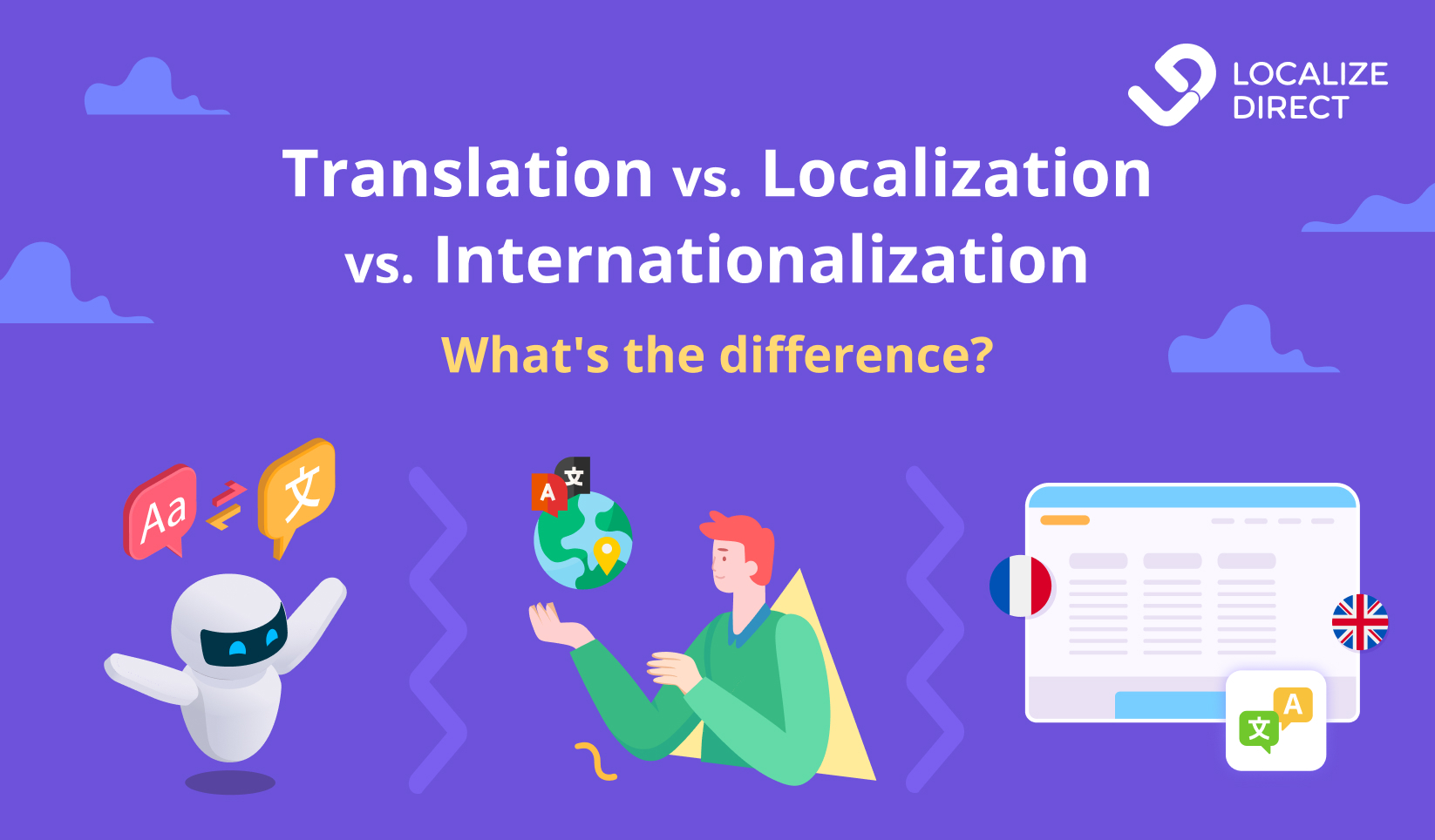Translation vs. localization vs. internationalization: what is the difference?

What is translation?
Translation is the act of adapting written content from a source language to a target language while preserving its meaning. When you translate text from one language to another, the goal is to convey the original message and intent as accurately as possible in the target language.
Accuracy and consistency are the primary metrics of a successful translation. Translators ensure the source content has been reproduced in the target language so that it reads naturally to its new audience, but with a strong emphasis on hewing closely to the original material.
Translation vs. transcreation
Transcration goes well beyond translation — it’s the remaking of the source content from the ground up to inspire new target-language content. Rather than stick closely to the source material with a word-for-word translation, copywriters engaged in transcreation will reimagine the source content to make it resonate more strongly with the target audience.
The goal of transcreation is to make target audiences all react in the same way to the content. The connection between the brand and the audience is much more important than preserving the original content, especially if the transcreator feels another approach would be more appropriate.
What is localization?
Localization (l10n) is the process of adapting a digital experience — such as a mobile app, website, or video game — to fully meet the needs and expectations of a target market. Localization focuses on delivering an intuitive and familiar experience to its target audience.
While accuracy and consistency are important to the quality of localized content, the effects of the content are even more important. Does your localized website or blog article convert well? Do players stick with your localized game weeks or months after installing it? Does your localized email campaign have a high click-through rate (CTR)?
User experience metrics tell you whether your localized content is resonating with your target markets. When localization budgets are tight, focus your spend on the locales most likely to maximize these KPIs. Thorough market research can help you determine which languages are the best for localization.
Localization vs. translation
Translation is all about rendering the message or meaning of the source text into a target language. But localization addresses the entire experience of engaging with your content. Think of translation as a literary process and localization as a contextual and experiential one.
Translation is typically the first stage of the localization process, but localization doesn’t stop when the translations are finished. Localization also considers visual assets as well as regional and cultural concerns.
For example, a localized website might feature user testimonials from people in the target region while also ensuring that its color choices and imagery don’t breach any local taboos. The localization team will also ensure that the new content doesn’t breach any local laws or regulations, such as GDPR.
Locale vs. country
You’ll often hear localizers referring to a locale instead of a country. A locale represents a country as well as the specific language used there, along with other cultural differences. Localized content for Portugal and Brazil will vary, even though the language for both markets is Portuguese.
Locales are denoted with four-letter codes representing the language and country:
- en-US: English for the United States
- es-US: Spanish for the United States
- en-AU: English for Australia
Localization vs. transcreation
Transcreation and localization are rooted in the same fundamental goal: giving target audiences a culturally relevant experience. But while transcreation is a written act, localization touches all aspects of a product. And while localized content is based on the source content, transcreation can sometimes require a copywriter to create entirely new content for the target market.
What is internationalization?
Internationalization (i18n) is the process of designing, developing, or preparing software so that it can be localized. It’s about designing and coding with localization in mind. Internationalization can occur from the earliest stages of the product development cycle, or retroactively if the decision is later made to localize something that’s already been built.
Internationalization vs. localization
Internationalization and localization are two sides of the same coin — the former is the critical setup phase that enables the latter to occur as efficiently as possible. Software developers who are focused on internationalization will never hardcode content into their builds.
Instead, they’ll use keys that, when a specific locale is selected, call localized content from a database. An internationalized codebase is completely locale-neutral and is instead designed to work smoothly with any target-language content.
The key to staying organized lies in choosing an easy-to-use content management platform that can quickly connect to your development platform and other tools — like Gridly. It’s a flexible spreadsheet platform ideal for managing and localizing content for games, software, apps, or websites.
Benefit from top-quality localization services
When it’s time to localize your next project, put your trust in the localization service provider trusted by Bethesda, Square Enix, and Avalanche Studios. With over 65 language pairs on offer, LocalizeDirect can get your product in the hands of over 2 million people worldwide — using top-tier localization and quality assurance to keep them engaged.
Ready to explore the possibilities of localization? Try our free localization tool to see just how much bigger your audience can get.

